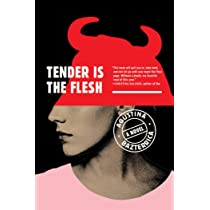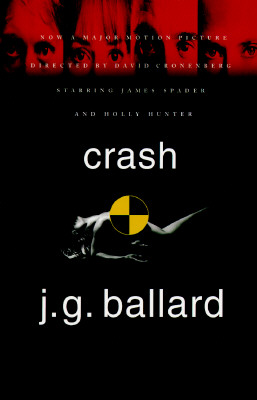If you were to ask horror fans about what European films come to mind from the 1960s and ‘70s, the responses would more than likely be what came out of Western Europe, particularly the U.K., and Italy. From Italy, you’d probably hear about the gothic horror films of Mario Bava, such as Black Sunday (1960), Black Sabbath (1963), or Blood and Black Lace (1965). It would be blasphemous to not mention Dario Argento’s Suspiria (1977), or some of his giallo films, mainly Deep Red (1975). Lucio Fulci would be mentioned, too, especially Zombie (1979). The U.K. has always been synonymous with Hammer Horror, along with numerous folk horror films that include The Wicker Man (1973), The Blood on Satan’s Claw (1971), and Witchfinder General (1968). During this period, however, another country in Western Europe was experiencing a phenomenon, rediscovering itself through the lens of horror: Spain! We don’t often hear much discussion about Spanish horror, despite its hefty catalog of films. With the success and popularity of horror films from other countries (this also includes the United States), Spanish horror was often overshadowed, with many films left forgotten. However, Spain is responsible for putting out some of the best (and original) horror films, and Spanish audiences couldn’t get enough of the haunting, bone-chilling visuals; the sex, death, gore, and carnage playing before their very eyes! Viewers were enthralled, thrilled, terrified, and shocked at seeing horrors they NEVER would’ve imagined appearing in Spanish theatres!
Why Spanish horror, though? Besides being something new for Spanish audiences, why discuss these films when you could see all the sex, violence, and death you want in horror films from Italy, the U.S., or even France? Spanish filmmakers not only drew from the films they were seeing put out elsewhere, but they took those concepts and made something wholly fresh and original. Some of the most iconic monsters in horror film history CAME from Spain. So, now, you have these creatures and madmen slashing, clawing, and biting their way through the silver screens of not just Spain, but other European countries as well, leaving a bloody trail of severed heads, mutilated bodies, and viscera! Appetites for sex, violence, the weird and macabre were MORE than satiated. Undead knights on horseback; mad scientists conducting horrifying experiments; resurrected noblemen; the werewolf who is forever cursed, never to experience love; naked vampire women, and more! Insane jazz sequences, gregorian chants, ambient sounds that creep under the skin and haunt you for days. Evocative and saturnine landscapes speckled with abandoned villages and dilapidated monasteries, captivating audiences. All-girl boarding schools run by authoritarian headmistresses. Not to mention all the flesh-ripping, gore, and nudity you could handle! Spanish horror films offered something unique and exotic, creating a legacy that would forever cement Spain in the annals of horror history. The Spanish horror boom didn’t truly begin until the late 1960s, but at the beginning of the decade, Spanish Cinema was ripe for change, and the groundwork for horror was laid.
The early 1960s brought major changes for Spanish Cinema. Originally, Spanish films were made for domestic consumption, and for Spanish-speaking countries in Latin America. Spanish companies were the only financers, and only Spanish actors and actresses were used. Additionally, there was little-to-no distribution outside Spain, so countries across Europe were never exposed to these films. This meant that very particular films were made for the intended audience, which mainly were comedies and dramas. In 1962, the Francoist government wanted to make serious financial changes to Spanish Cinema and wanted to compete with European New Wave Cinema. This was also prompted by contemporary foreign films being featured more frequently at Spanish theatres. These films would expose Spanish filmmakers to different ways of filming cinema. Some Spanish films did receive acclaim outside Spain, making the government aware of the positives that can come from distributing more films beyond its borders. This also meant collaborating with other European countries and making co-productions. This promotion of what was called Nuevo Cine Español (New Spanish Cinema) (NCE for short) was not without its flaws, however, and unfortunately, numerous caveats came with it. By 1968, the new production system was quite costly, and led to delayed payments of government subsidies, causing the NCE to be an economic failure. One of the only film-types to survive this crash was the horror genre, and directors found ways to continue putting them out while working around heavy restrictions.
Rigid censorship rules were enforced, determining what was acceptable to be made as a film. Scripts had to be officially examined, and anything that went against the ideologies and values of the regime (political, social, sexual, and cultural) had to be removed. Directors were subjected to a plethora of re-edits (this would sometimes include reshoots) if they wanted their films to appear on the screen. This forced many directors to develop strategies to work around the limitations set upon them. The origins of Spanish horror were BORN from these constraints, as evidenced in what is widely regarded as the earliest Spanish horror film, Jess Franco’s The Awful Dr. Orlof. Released in 1962, The Awful Dr. Orlof was vastly different from what Spanish audiences were accustomed to viewing; it deviated from the normal conventions and ideals of Spanish filmmaking, subverting gender roles and combining gothic horror with detective tropes. It featured darkly-lit streets and shadows at every possible corner, hiding the horrific and unknown! Franco took the mad scientist genre and made it his own, creating something truly bizarre and ghastly! It was a co-production between Spain and France, and while it was shot in Madrid, Franco set the story in France, because, according to the regime, evil could never exist in Spain. This is a tactic that other directors would utilize in their films, like Pedro L. Ramirez’s School of Death (1975), set in Victorian London, or Miguel Madrid’s The Killer of Dolls (1974), set in France. To pass the rules of the censorship board, Paul Naschy’s famous werewolf, Waldemar Daninsky, came from Poland, because the regime said there were no werewolves and lycanthropy in Spain, as they went against Catholic doctrine. Other Spanish directors decided to make some of their films outside of Spain. José Luis Madrid filmed The Horrible Sexy Vampire (1971) in Germany. Jess Franco shot multiple films in different countries. José Ramón Larraz shot some of his films in the U.K., such as Symptoms (1974) and Vampyres (1974). Directors would also use foreign actors like Jack Taylor, Wal Davis, or Howard Vern, or even using Spanish actors who hardly worked outside the genre, and their voices dubbed so the average viewer couldn’t identify them. Double versions of films also had to be made, one for domestic viewing, and one for international viewing. Spanish audiences would get the edited version that would have nudity edited out, while international audiences would get the fully unedited versions (The Awful Dr. Orlof is an example of this). The first half of the 1960s didn’t see too many horror releases, but the seeds were planted, and the second half would experience an enormous boom!
1966 saw the release of the television series Historias para no dormir (Tales to Keep You Awake), from Uruguayan-born Narciso Ibáñez Serrador. Similar to series like The Outer Limits and The Twilight Zone, Serrador’s episodic show adapted stories from writers like Ray Bradbury, Henry James, Edgar Allan Poe, and many others! From ‘66 to ‘68, he sent shockwaves throughout Spain! The release of his first horror film, La Residencia (1969) is what catapulted the horror genre in Spain. It was the first commercial horror film to come out of Spain, intentionally made to break through the international market. It also was the first Spanish film produced with English dialogue. Even more, it’s one of the earliest examples of a proto-slasher! It featured both English and Spanish actors/actresses and was a box office hit. It was the highest-grossing film in Spain at the time. The film would pave the way for a multitude of horror films over the following years. Directors like Amando de Ossorio, Pedro Olea, Jorge Grau, Eloy de la Iglesia, Raúl Artigot, and others would leave their mark on Spanish horror. Some of these filmmakers put out multiple films, while others only one or two. Over the following months, we will take a deeper look into these directors and their films, exploring their impact on the genre, and discussing the themes and symbolism, along with the socio-cultural and political commentary found in those films. Stay tuned!





























